“Can Beyoncé or Adidas Sue Popeyes Over Its Ivy Park-Inspired Collection? - Complex” plus 2 more |
- Can Beyoncé or Adidas Sue Popeyes Over Its Ivy Park-Inspired Collection? - Complex
- See the Best Super Bowl Performance Looks of All Time - E! NEWS
- How Dua Lipa's "Physical" Video Pays Homage to Beyoncé and Daft Punk - W Magazine
| Can Beyoncé or Adidas Sue Popeyes Over Its Ivy Park-Inspired Collection? - Complex Posted: 31 Jan 2020 08:31 AM PST 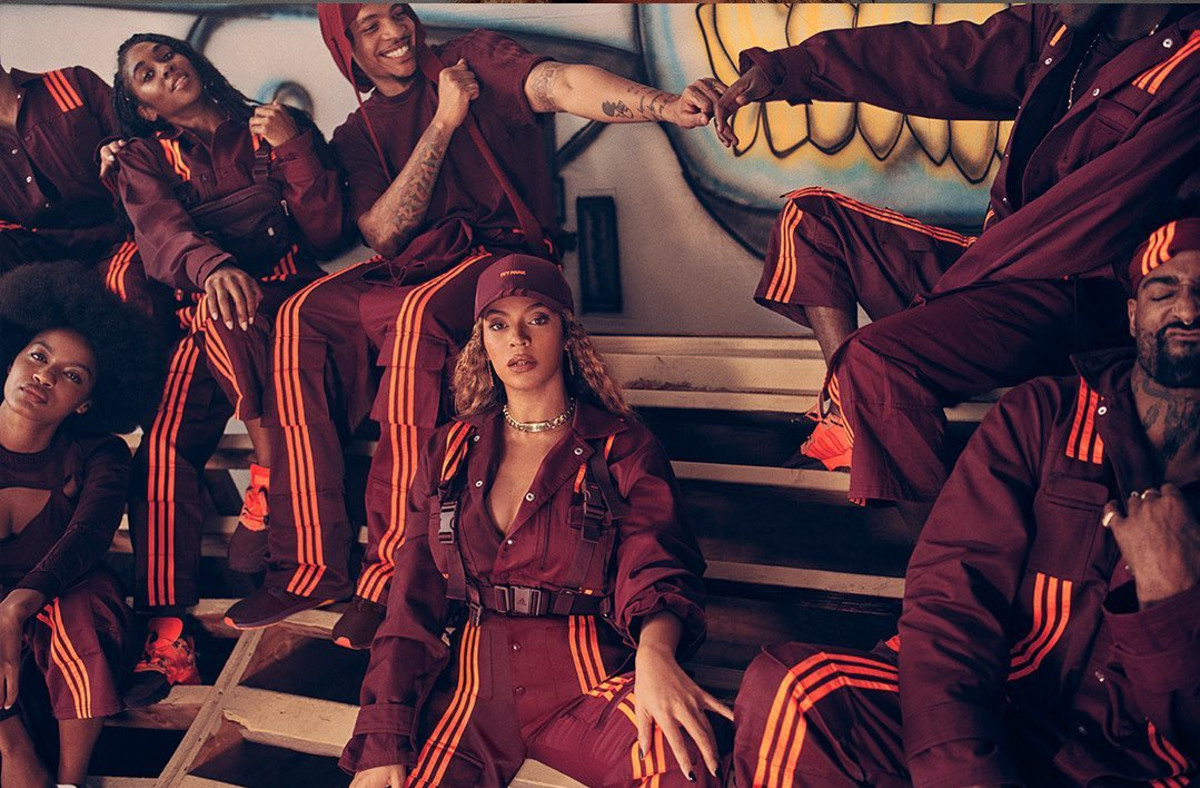 Earlier this week, Popeyes dropped a collection titled "That Look From Popeyes," which spoofed Beyoncé's Ivy Park Adidas collaboration that was released earlier this month, but is currently sold out. Popeyes mimicked the Ivy Park Adidas collection's maroon and orange color palette, which, in all fairness, the chicken chain is known for, and produced athleisure pieces like sweatshirts, oversized crew necks with the Popeyes logo on the sleeve, and long sleeve quarter-zip tops—the company claims these pieces are employee uniforms. The imagery for the collection took cues from Beyoncé's e-commerce images and her lookbook shots. It was a smart marketing play, and garnered a lot of attention—the Popeyes collection is currently sold out and proceeds will go towards the Popeyes Foundation—but was it legal? We spoke to professor Susan Scafidi, the founder and president of the Fashion Law Institute at Fordham University, to see if Adidas or Beyoncé can take legal action. Did Popeyes do anything illegal with its That Look from Popeyes collection? Adidas and Beyoncé may have not been thrilled by the Popeyes association. On the other hand, Popeyes is also taking the sting out of it a bit by giving the proceeds to charity, which doesn't have direct intellectual property impact. But it does mean that it would be strategically a little more difficult for Adidas and Beyoncé to object. Have you seen something similar to this where there were legal ramifications? It's not clear to me that the Adidas, Ivy Park collection intended to reference Popeyes, they might not be thrilled with it going a little bit downmarket, in terms of their references, but it sold out, so they can't be too concerned that consumers made the connection. It seems like it's very hard to copyright design. We see Fashion Nova copy a high end dress Kim Kardashian wears all the time, and it's legal right?  Why is that? Do you think Adidas/Beyoncé would have any chance taking action if we were in a different country? But you mentioned how Tiffany has trademarked Tiffany blue, right? I just want to know if Popeyes could have done something about the Adidas Ivy Park collection's maroon and orange colorway. Clearly there is an association in the consumer's mind, so there's the possibility that Popeyes could have tried to shut down the Adidas Beyoncé collab, because they would've said it's a common law trademark, something that is pretty unique to the U.S. That's a trademark that because it's being used as a trademark and it's recognized by consumers, it gets some legal protection, even without a formal registration. But Popeyes would have trouble doing that because they are not competing in the same space. Popeyes sells chicken. Adidas sells shoes and clothes. So it's not the same thing. If however, Popeyes had sold its uniforms to the public forever and was clearly established in the clothing space, then there could have been a conflict. |
| See the Best Super Bowl Performance Looks of All Time - E! NEWS Posted: 31 Jan 2020 03:00 AM PST When fashion meets football. Even though the 2020 Super Bowl is just days away, we're taking this time to walk down memory lane. But instead of reminiscing about the glory days of the beloved NFL event, we're looking back at something far more important: the best style moments to ever happen during the Halftime Show performances. From Beyoncé's eye-catching black leather military jacket, gold chain harness and combat boots in 2016 to Diana Ross' larger-than-life strapless gown that swallowed the stage in 1996, these were the fashion lewks worthy of their own trophy. Lady Gaga made several outfit changes during her performance, which stole the show in 2017. Along with her glitzy football shoulder pads ensemble, her holographic blue bedazzled bodysuit and matching knee-high boots scored big that night. And it's safe to say that Shania Twain's fabulous number at the 2003 event really pushed the style boundaries for shows to come. The country legend oozed with glamour in a diamond-adorned bustier, an extreme cut-out leather cape jacket and itty-bitty bottoms. She tied her flashy look together with equally lavish jewelry pieces, sexy knee-high boots and fishnet tights. To see who else lit up the Super Bowl Halftime Show with their daring and dashing designs, scroll through our gallery below!  KMazur/WireImage Shania TwainOne word: wowzers. The country legend brought the glitz and the glamour to the 2003 game with her jewel-encrusted bustier, holographic black leather jacket and equally dazzling diamond accessories.  Focus on Sport/Getty Images Diana RossWe're endlessly in love with this lewk. The icon oozes with glamour at the 1996 Super Bowl with her dramatic metallic gold jacket and majestic purple jumpsuit. 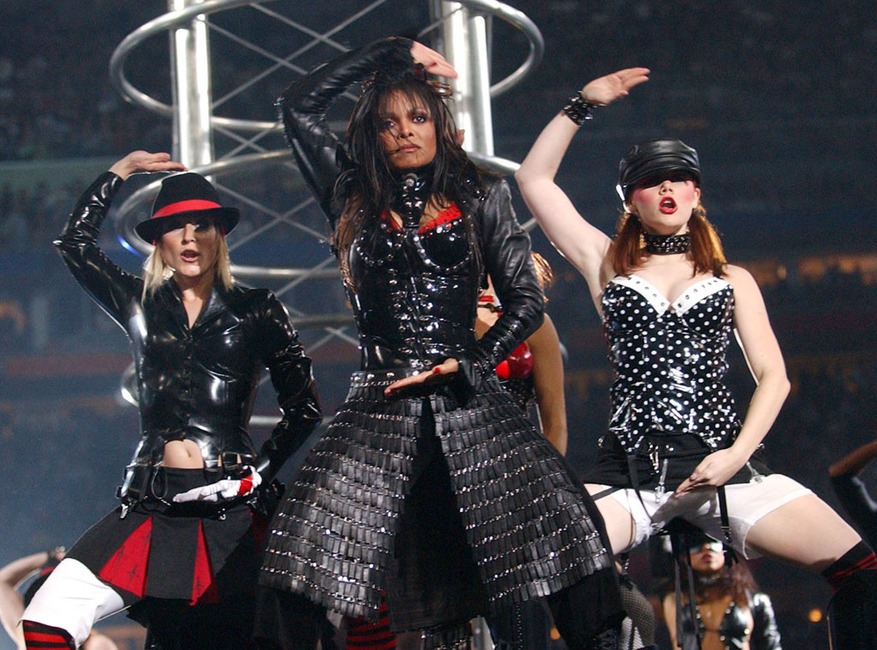 KMazur/WireImage Janet JacksonThe Super Bowl that will remain apart of history! Aside from the "wardrobe malfunction," this is one fiery outfit! From the latex leather material to the gladiator-like design, the pop icon shows up and shows out. Article continues below  Kevin Mazur/WireImage BeyoncéThe "Spirit" songstress makes the Super Bowl field her runway wearing an eye-catching black leather military jacket and gold-chain harness at the 2016 show. 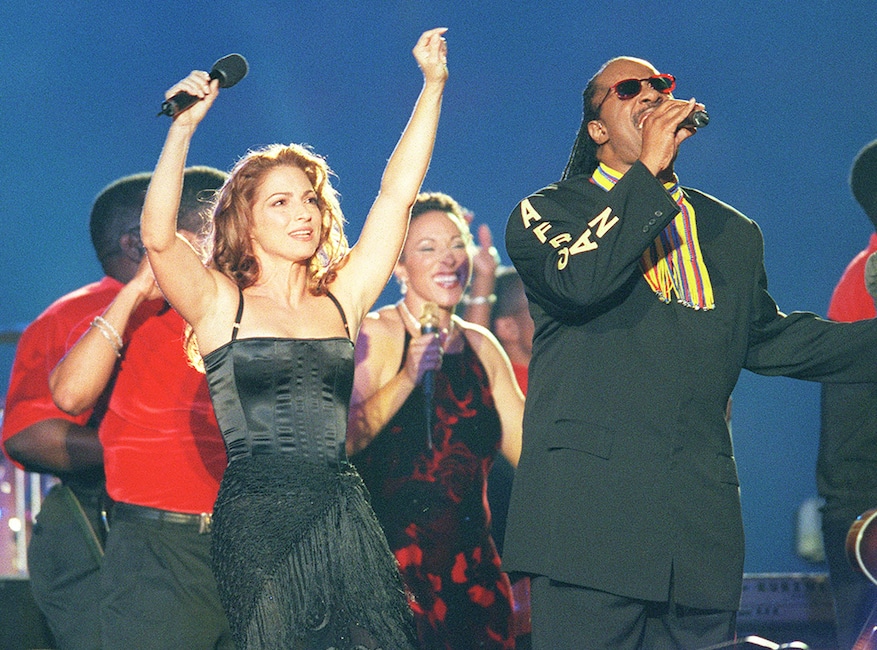 Joe Traver/Getty Images Gloria Estefan & Stevie WonderLittle Black Dress! Estefan wears a simple but striking fringe, corset black dress at the 1999 Super Bowl. She performs with Stevie Wonder, who also lights up the stage with his outfit.  George Rose/Getty Images Wynonna Judd & Naomi JuddA dynamic duo! Wynonna and Naomi ooze with glamour at the 1994 event with their effortlessly elegant designs. Article continues below 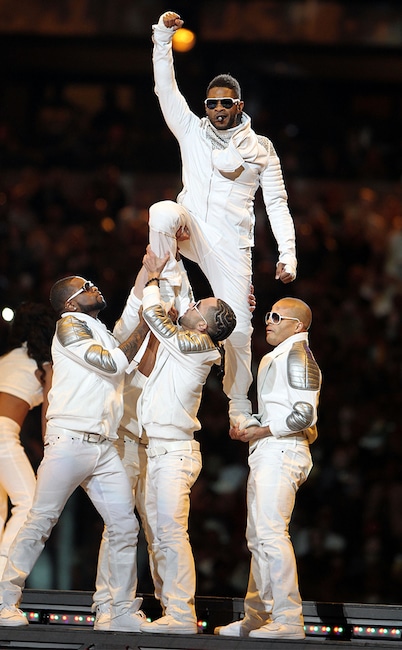 Christopher Polk/Getty Images UsherUsher is a vision in white at the 2011 Super Bowl Halftime Show in Texas. 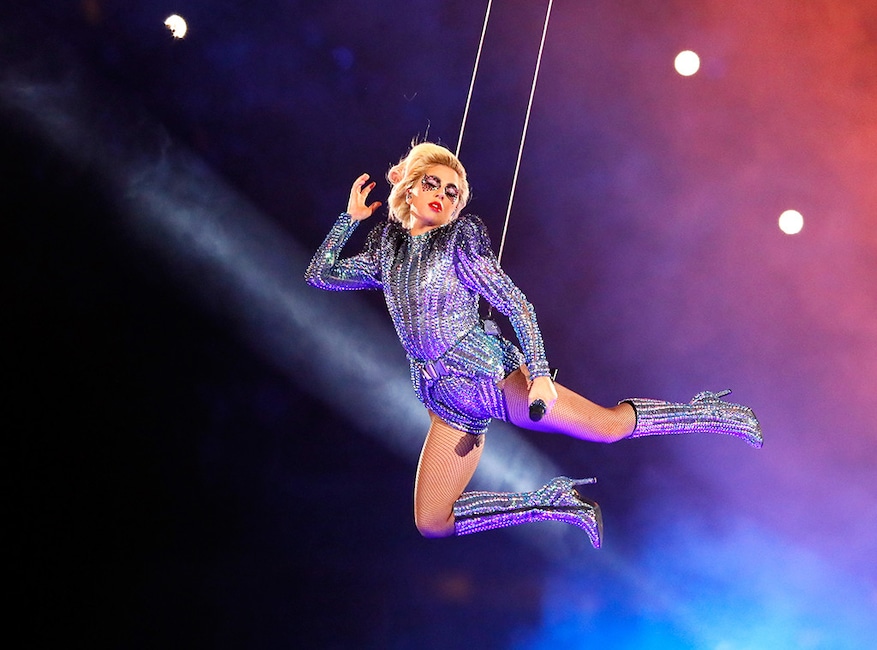 Patrick Smith/Getty Images Lady GagaA round of applause. The "Poker Face" songstress dazzles at the Super Bowl show in 2017 with her shimmery bodysuit and matching boots that feature an explosion of rhinestones. Now, that's a lewk.  Ezra Shaw/Getty Images No Doubt & StingFrom the lace-up booties to the glimmering silver-studded bustier and flashy monogrammed belt, Gwen Stefani serves bawdy and face at the 2003 ceremony. Article continues below  Kevin Mazur/WireImage Katy PerryBaby shark, who? Jokes aside, Perry brings bright and bold fashion to the 2015 Super Bowl with her rainbow-colored bustier and skirt.  Doug Pensinger/ALLSPORT Britney Spears & AerosmithName a more iconic duo... we'll wait! The Pop Princess gets into the football spirit with her fun and flirty uniform-inspired tee and pants. Aerosmith's Steve Tyler also joins in with his festive ensemble.  Al Pereira/WireImage BeyoncéWho run the world?! The Grammy winner slays the Super Bowl in 2013, wearing a daring leather bodysuit. Article continues below  Focus on Sport/Getty Images Diana RossA performance so good, Ross gives fans an outfit change. At the 1996 Super Bowl, the legendary singer lights up the stadium with her vibrant orange and purple dress.  Jeff Kravitz/FilmMagic Madonna & CeeLo GreenThe "Queen of Pop" goes for a goth-glam lewk at the 2012 show, as she rocks a black sequins coat dress and gold-encrusted punk gloves. CeeLo also shines bright with his equally blinged out ensemble. With that in mind, we can't wait to see what Jennifer Lopez and Shakira slay in during their 2020 performance. |
| How Dua Lipa's "Physical" Video Pays Homage to Beyoncé and Daft Punk - W Magazine Posted: 31 Jan 2020 01:18 PM PST Dua Lipa has made no secret that she's drawing inspiration from the past. Her upcoming album is titled Future Nostalgia, after all, and some of her recent wardrobe choices look like they were chicly up-cycled from a Delia's catalog. So it was perhaps inevitable that one of Ms. Lipa's music videos from this album cycle would in some way reference the golden days of TRL. Her latest offering, "Physical", does just that. It's chock full of late '90s and early '00s cliches, but puts a new twist on them, saving the video from being an uninspired stream of first thought references (see: Charli's "1999" video). As any viewer of MTV's Making The Video knows, quite often a pop music video from that era's entire concept could be as simple as something like, "Ok, so you're going to start out in the blue room wearing blue clothes, and then, later, we're going to twist it up and you'll be in the red room wearing red clothes. They'll never see it coming!" Destiny's Child's "Say My Name" is one of the finest examples of the trend. Beyoncé and her bandmates each start off in their respective color-coded rooms before the video uses another well-worn trope of the time: the magically moving set (which we'll circle back to). Christina Aguliera's underrated "Come on Over" also stands out as a defining use of the color coordinated trope. And Blaque's "Bring It All To Me" puts a futuristic spin on the idea.
Over in Lipa's native England, pop acts like Girls Aloud were doing it as well. There are likely dozens of other examples out there, but the point stands: coordinating your outfits to the walls of your room was a major component of turn-of-the-century music video vocabulary. That trend's only rival? The aforementioned magically moving set. TRL-era directors were using all sorts of camera tricks and contraptions: rooms that literally rotated (as seen in videos from 'NSYNC and Dream), entire walls moved by dollies, and turntables and treadmills being built into the floor. Jamiroquai's "Virtual Insanity" was the prime example. But numerous videos from Michel Gondry play with the dynamic in unique ways. Most notably the set in Daft Punk's "Around The World," doesn't actually move, but the choreography and camera work is meant to make it look like it's spinning like a record. Which brings us back to Lipa's latest. Shot in what seems to be an expansive warehouse or soundstage, the video depicts the 24-year-old English singer traveling through different color-specific zones, her own outfit changing each time. She winds up spinning on a turntable with her lover, and then it all explodes with dancers from each of the separate color zones meeting in the center for some very "Around The World"-like choreography. It's a literal kaleidoscope of late '90s and early '00s music video signifiers simmered down to their essence and built up into something new.
Related: Dua Lipa Cannot Believe the Internet Thinks She Photoshopped Her Lips in Baby Pictures |
| You are subscribed to email updates from "beyonce outfits,beyonce phone,beyonce phone number" - Google News. To stop receiving these emails, you may unsubscribe now. | Email delivery powered by Google |
| Google, 1600 Amphitheatre Parkway, Mountain View, CA 94043, United States | |





0 Yorumlar